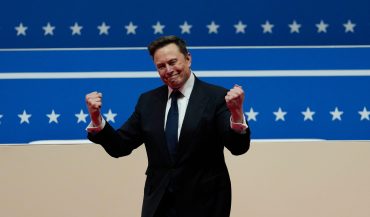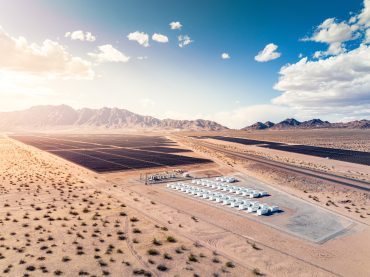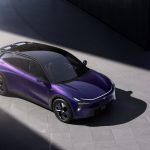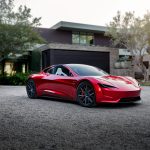
- Autonomous Vehicles
- Energy Storage
- Stock Market
Tesla’s September Surge: Energy and Autonomy Drive Gains
6 minute read

Tesla shares surged 32% in September on energy storage growth and autonomous vehicle approvals, as markets await Q3 delivery results.
Tesla Inc. has delivered one of its most impressive monthly performances of 2025, with shares climbing approximately 32% through September—marking the electric vehicle and energy company’s strongest monthly gain since late 2024. As markets await the company’s Q3 delivery report scheduled for today, investor enthusiasm reflects growing confidence in CEO Elon Musk’s vision of transforming Tesla from an automaker into a diversified technology enterprise spanning electric vehicles, energy storage, and artificial intelligence.
The rally has prompted bullish revisions from several Wall Street analysts, though the stock’s future trajectory hinges on whether Tesla can sustain operational momentum across its increasingly diversified business lines.
Energy Storage: Tesla’s Quiet Revolution
At the core of Tesla’s recent resurgence lies an often-overlooked segment: energy storage. This business has evolved from a supplementary revenue stream into a potential growth engine, particularly as global demand for grid-scale battery systems accelerates.
In Q2 2025, Tesla deployed 9.6 gigawatt-hours of energy storage products, maintaining the strong momentum from Q1’s record 10.4 GWh deployment. The combined 20 GWh deployed in the first half of 2025 represents substantial growth as utilities and data centers increasingly seek resilient, decentralized power solutions to address grid constraints and surging electricity demands driven by AI infrastructure.
The strategic importance of this segment cannot be overstated. As traditional power grids strain under electrification pressures and the exponential energy requirements of artificial intelligence, Tesla’s Megapack and Powerwall products position the company as a critical infrastructure provider. The energy storage market is projected to reach well over $100 billion globally by 2030, and Tesla’s manufacturing scale gives it a distinct competitive advantage.
Unlike the automotive business, which faces margin pressures from intense competition and pricing dynamics, energy storage offers higher-margin, recurring revenue characteristics more typical of technology businesses than manufacturing. This diversification provides crucial ballast as Tesla navigates a maturing EV market.

Autonomous Ambitions Take Tangible Form
Complementing the energy narrative is Tesla’s measured progress toward autonomous mobility. In mid-September, Arizona’s Department of Transportation granted Tesla approval to test autonomous robotaxi vehicles with safety monitors in the Phoenix metropolitan area—a significant regulatory milestone that extends similar pilots already underway in Austin, Texas.
These initiatives represent Tesla’s first structured foray into AI-powered ride-hailing on public roads, deploying Model Y vehicles equipped with Full Self-Driving software alongside human safety operators. While still in early stages, these programs signal regulatory warming in key markets and provide critical real-world data to refine Tesla’s autonomous systems.
The market responded enthusiastically to the Arizona approval, with shares jumping sharply on the news. Analysts view these pilots as foundational steps toward a potential autonomous mobility network that could generate substantial recurring revenue streams within the decade, though execution risks remain considerable. Competitors like Waymo have demonstrated more advanced driverless capabilities at scale, and Tesla’s FSD technology continues to face federal scrutiny regarding safety and performance.
The Delivery Report: A Critical Inflection Point
Today’s Q3 delivery announcement will provide crucial evidence of whether Tesla’s operational fundamentals justify the recent stock surge. Wall Street consensus projects approximately 447,000 to 448,000 vehicles delivered in the quarter—representing a modest year-over-year decline from Q3 2024’s 463,000 units, but a substantial 17% sequential increase from Q2 2025’s 384,122 deliveries.
Some analysts have raised estimates significantly higher, with projections ranging from 465,000 to 480,000 vehicles, driven by expectations of strong demand in China and the United States. A key factor: the expiration of the $7,500 federal EV tax credit at the end of September, which may have accelerated purchases into Q3.
Tesla’s full-year delivery outlook stands at approximately 1.85 million vehicles for 2025, following 336,681 deliveries in Q1 and 384,122 in Q2. Meeting or exceeding Q3 expectations would demonstrate operational resilience and validate the production capabilities at facilities like Gigafactory Texas, which has reportedly ramped output significantly as the quarter concluded.

Valuation and Market Dynamics
Tesla’s premium valuation—trading at forward price-to-earnings multiples well above traditional automakers—reflects investor bets on the company’s transformation beyond vehicle manufacturing. The September rally added substantial market capitalization, pushing Tesla’s valuation deeper into elite territory.
This valuation embeds high expectations for execution across multiple fronts: sustaining EV market share amid intensifying competition from both legacy automakers and Chinese rivals like BYD; scaling energy storage profitability; and demonstrating meaningful progress toward autonomous vehicle commercialization. It also incorporates what analysts term “Musk risk”—the potential for distraction or controversy stemming from the CEO’s varied business interests and public persona.
Recent analyst price targets reflect divergent views on these factors. While some analysts see continued upside based on Tesla’s technological leadership and diversification, others caution that current prices fully reflect even optimistic scenarios, leaving limited margin for disappointment.
Looking Ahead
As Q3 delivery data arrives, investors will scrutinize not just the headline numbers but the underlying trends: geographic mix, product segment performance, and any forward guidance on production capacity or pricing strategy. Beyond deliveries, upcoming quarterly financial results will provide critical insights into energy storage margins, autonomous technology investment levels, and overall profitability.
Tesla stands at a pivotal juncture. The company is no longer simply an electric vehicle manufacturer but an increasingly complex enterprise spanning automotive, energy infrastructure, and artificial intelligence. Whether September’s stock surge marks the beginning of a sustained advance or a momentum-driven spike will depend on Tesla’s ability to execute across these diverse businesses while managing the inherent challenges of competing in rapidly evolving markets.
For now, the combination of energy storage growth, regulatory progress in autonomous vehicles, and anticipated strong Q3 deliveries has captured market imagination. The question is whether operational reality can sustain it.
This analysis is based on publicly available information and should not be construed as investment advice. Tesla stock performance and business results involve significant risks and uncertainties.








